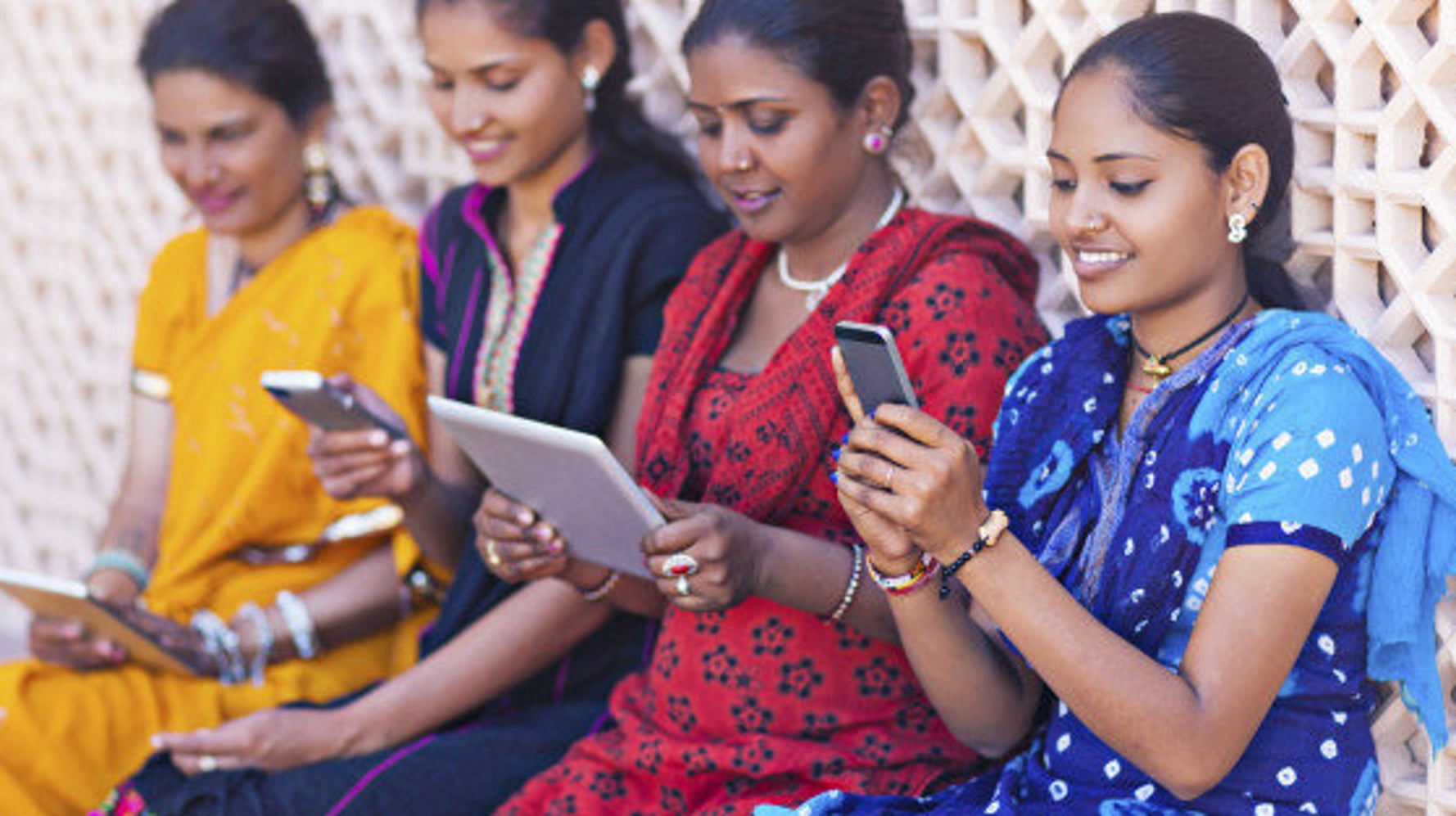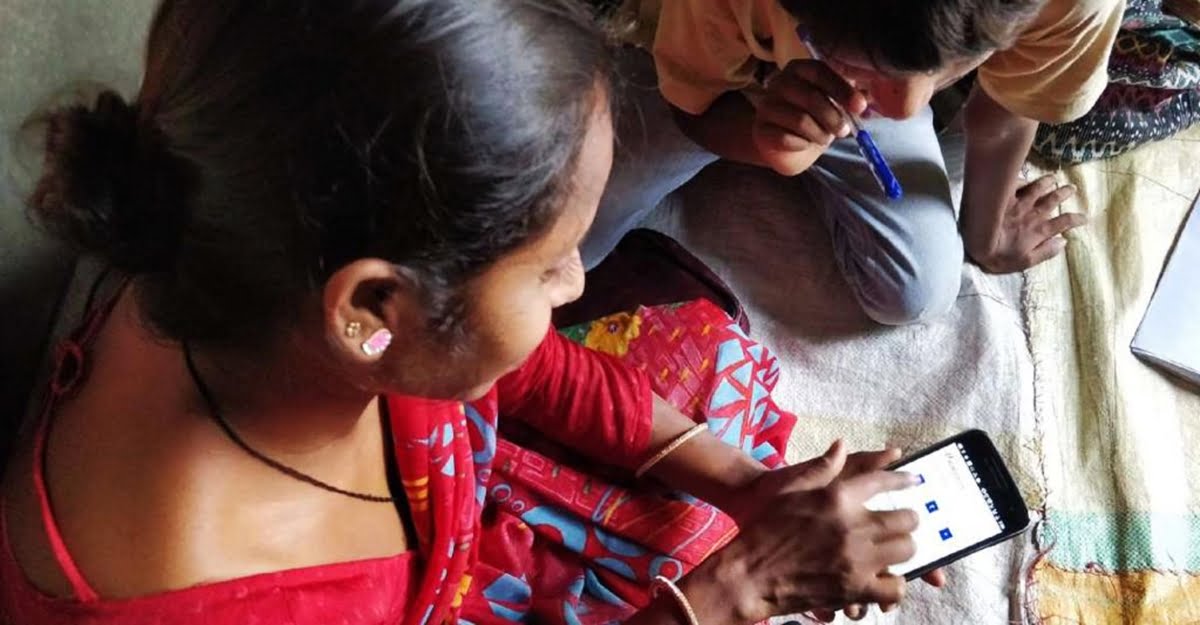The women homemakers have found unique ways of using a smartphone within their domestic spaces to express their narratives of their “intimate zones of life”, observes Heather Horst in Mobile intimacies: Everyday design and the aesthetics of mobile phones. This has also paved a new way to facilitate their need, hobbies, exhibit their talent, story-tell, vlog or do “smart homemaking” through a smartphone.
Through these phenomena, the urban Indian housewives are exploring their own potential with smartphones because of the intimacy associated with their portability.
Even though there is no data on Indian housewives’ usage pattern of smartphones and internet platforms, the popular culture of mobile storytelling has opened an interesting observation of the homemakers in Vadodara in Gujarat, who consciously or unconsciously are contributing to mobile storytelling.
The Cambridge dictionary defines intimacy as, “things that are said or done only by people who have a close relationship with each other”. Furthermore, according to Collins dictionary, the definition of a housewife “is a married woman who does not have a paid job but instead looks after her home and children”.
Here we are looking at the close relationship that housewives in Vadodara share with smartphones and why it is seen as a popular scenario in the larger context of urban India. It has been observed that urban Indian housewives constitute around 88% of the women population in India.
The percentage of users of smartphones is rising and urban Indian women constitute a significant part of the smartphone users in India.
According to recent reports by Data Reportal, around 40% of smartphone and Internet users are women in India. Moreover, women users of streaming channels like YouTube are also around 40% and 10–20% are women between the age groups of 25–64.
According to a report by Economic Times, almost 10% of the channels on Youtube were run by women in 2019 which is in sharp contrast to just one woman with more than one million subscribers in 2016.
The rising intimacy with smartphones is the design of the smartphones that makes them “mobile” and convenient to use. The design is not just the shape but also the accessibility of the digital platforms like Google, Instagram, Facebook, etc., which are working dynamically on their utility by working on their customized usage like Google Translate and social media applications’ accessible interfaces.
The rising intimacy with smartphones is the design of the smartphones that makes them “mobile” and convenient to use. The design is not just the shape but also the accessibility of the digital platforms like Google, Instagram, Facebook, etc., which are working dynamically on their utility by working on their customized usage like Google Translate and social media applications’ accessible interfaces.
Moreover, today, a smartphone is a package in terms of all applications and software being designed keeping in mind its compatibility with smartphones. So from banking, emails, messages and streaming channels, all have found a place to be inside our smartphones.
Heather Horst explores the different facets of the intimacy of a mobile phone and how it makes its presence inevitably unavoidable, in her essay. Horst talks about the correlation of both material culture (mobile phone), body and performativity.
Thus, the mobility and the small-size feature of a smartphone has led to the simultaneous balance of the domestic sphere and also the social, economic and cultural lives of the housewives. Moreover, Horst argues that the material culture and infrastructures need to be seen in relation to social positions too.
Also read: Women Speak Out About Their Experience Of The Internet
The Internet And Housewives
When one talks about the internet and its relevance in the lives of housewives, it can be seen primarily in terms of social media, emails, shopping for domestic use and for oneself.
Social media acts as a dominant medium to engage in long-distance social interactions and transgresses geographical, economic or political limitations. Moreover, social media platforms are dynamic platforms as they can have flexibility and can be used to different degrees as to how the user wants to use them.
For example, different homemakers can use Facebook in different ways. So some can be passive viewers who interact only for their own desire like just watching the content, while some might have limited engagement like comment and reacting to content and interact with their social circles by sharing, using for infotainment, messaging etc.
Some might interact more by posting and reposting or even vlogging/blogging. On the other hand, there are housewives who might even try to engage in economic trade, for instance, several apps nowadays give urban homemakers the opportunity to platform their small businesses.

The Study Of Housewives In India
We conducted a survey in Vadodara, Gujarat, India, with a sample size of 30 housewives in October 2021 aged between early 30s to late 50s. Around 31% of the housewives are in their 30s, while 18% are in their 40s and 26% are in their 50s.
83.3% of the housewives live in a nuclear family. The majority of the women belong to middle class and upper-middle-class families. All the women have personal smartphones. Almost 85% of the women have smartphones whose price range is between ₹10,000–20,000. Moreover, 50% of the housewives use mobile data and 38% use both broadband and mobile data.
44.4 % of them spend ₹300–500 monthly on the Internet and 38.9% spend ₹100–300. Around 33.3% of them spend less than 2 hours on their smartphones, while 29% use it for 3–4 hours.
Almost 33% use WhatsApp, Facebook, Instagram and YouTube. 94.4% use both WhatsApp and YouTube. While 16.7% use children’s applications for their children along with WhatsApp and YouTube. Only 5.6% consume all the elements mentioned.
Content Consumption And Creation
The data reveals that almost 100% watch vlogs, short videos and music. All consume it in their native languages like Gujarati, Kannada, Assamese, in addition to Hindi and English.
Almost 30% of them only send and forward messages, watch reels, funny videos, cooking shows and food blogs, watch and listen to music, spiritual and religious content. While the rest of the 60% also consume children-specific, lifestyle, infotainment, art and craft, stitching, sports and pet adoption and care.
The idea of content creation for almost 55% of them was interaction through messaging, sending images and videos to their close circles, putting up WhatsApp statuses, Facebook stories, posting their pictures on Facebook and Instagram. While 16% do not post or put up anything.
The other 10% make reels and short videos and post them on their Facebook and Instagram profiles along with putting up WhatsApp statuses, Facebook stories and posting pictures on Facebook and Instagram.
Besides, 21% of these homemakers have been interacting with their smartphones for 5–6 years as they have had their personal smartphones since then. Apart from this, almost 15% of them used to use Facebook from their family computers earlier but shifted to their mobile applications as soon as they owned one. Almost 95% do not own a personal laptop.
Personalisation Of Smartphones
The study reveals that the dominant idea of a mobile phone design was for immediate and intimate use for their own personal satisfaction. This also brings us to associate these housewives’ behaviour with the idea of “intimate co-presence”, an idea defined by Horst. It talks about the use of mobile phones for posting about daily and mundane affairs and keeping a connection with closer circles.
The study reveals that the dominant idea of a mobile phone design was for immediate and intimate use for their own personal satisfaction. This also brings us to associate these housewives’ behaviour with the idea of “intimate co-presence”, an idea defined by Horst. It talks about the use of mobile phones for posting about daily and mundane affairs and keeping a connection with closer circles.
One cannot avoid the gender performativity attached to this.
This brings us to the dominant content of religion and cooking in our study as in Indian culture, a married woman is expected to significantly perform the religious and cooking activities. The study also reveals this gendered performativity is similar among the women in a particular age group.
Also read: Gujarat’s Thakor Community Bans Inter-Caste Marriage And Cellphones For Unmarried Women
Thus, the women in their 40–50s are associated with religion and cooking more, while the younger women in their 30s use their smartphones majorly for their children’s learning. The study shows that a few women also use their smartphones for therapeutic content like spirituality, musical therapy, music, etc., which shows an emotional and lifestyle improvement aspect of consuming that kind of content.
One can conclude through the findings of this this study that very popular content consumption is the result of the nuances that technology shapes and are shaped by culture, class, generational and gender nuances.
The process of intimacy with smartphones is enabled by various factors from the design, language accessibility, mobility, target consumers of the companies, cost factor, ability to keep long-distance interactions and emotional connection and getting all these exposures from their domestic spaces itself.
Paramita Baishya is pursuing masters in Convergent Journalism from AJKMCRC, Jamia Millia islamia, New Delhi.
Featured image source: Down To Earth




